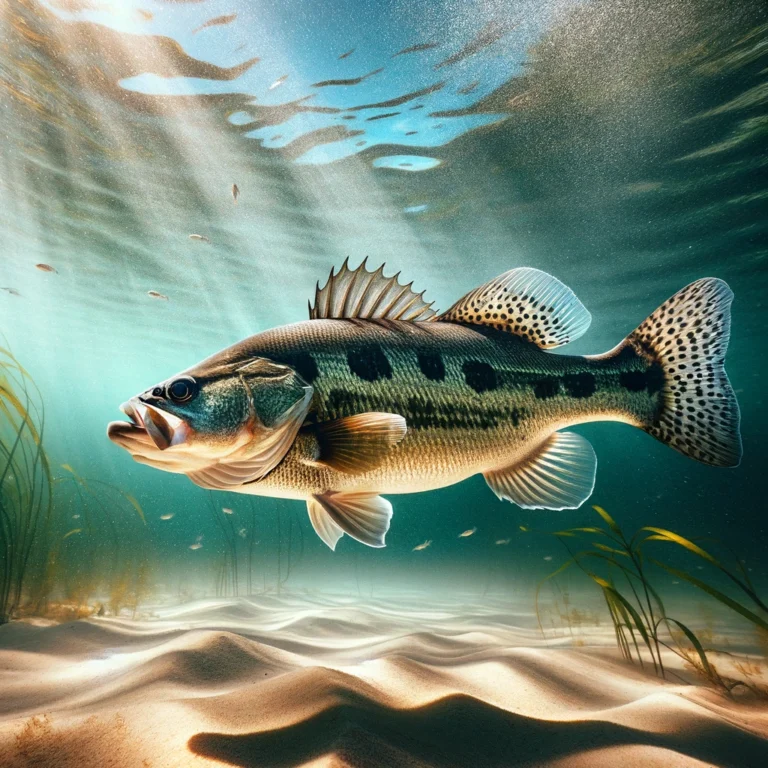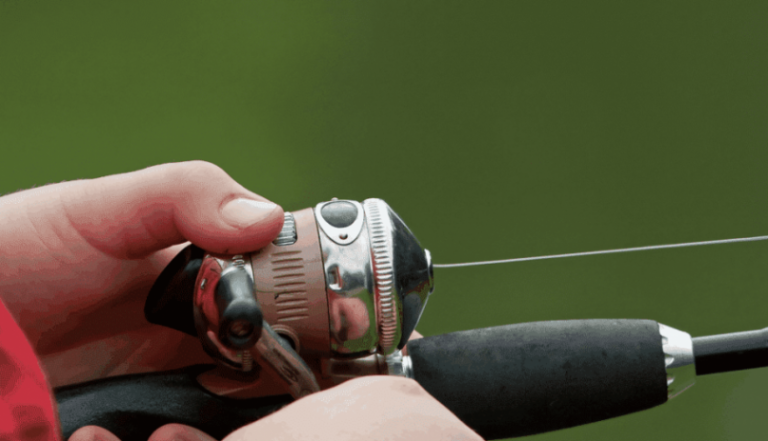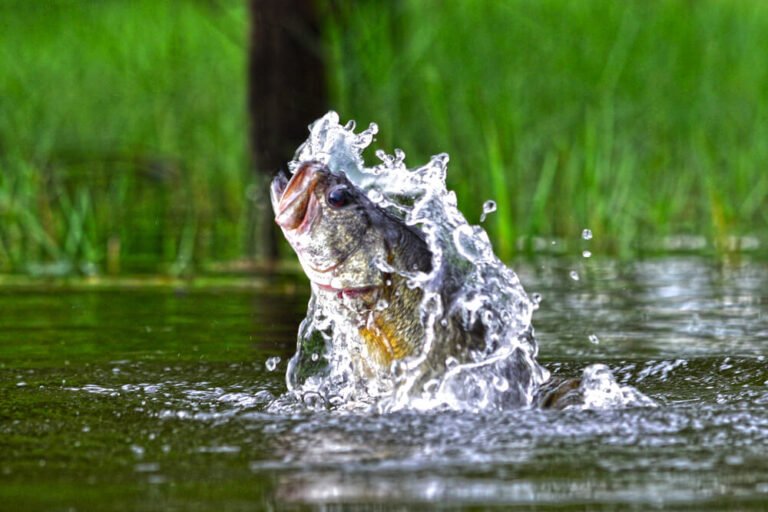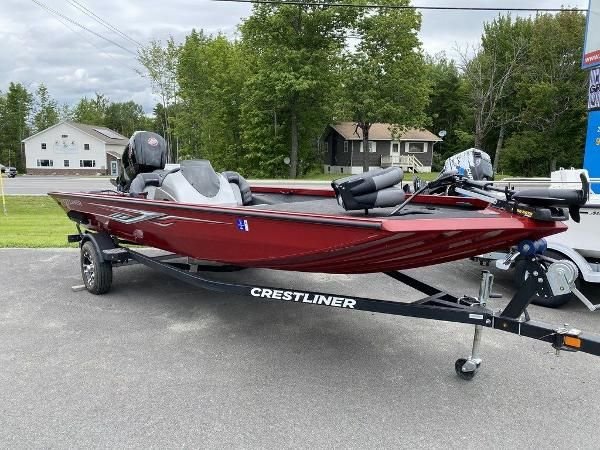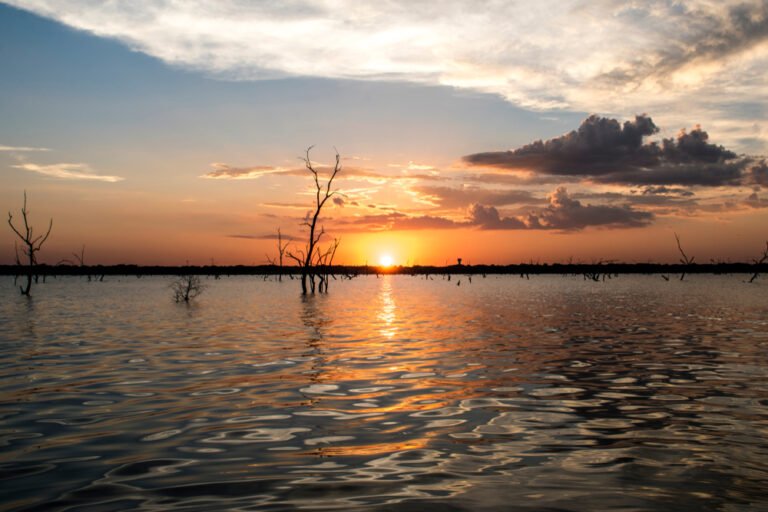The smallmouth bass belongs to the sunfish family and is a highly sought-after sportfish. It is characterized by its robust body shape, with a compressed oval silhouette and a distinctive elongated jaw. They are a lot of fun to catch, which is why you need to go smallmouth bass fishing.
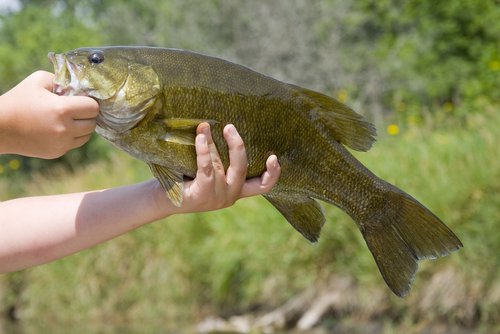
The coloration of smallmouth bass can vary depending on their habitat and age. Typically, they have a bronze to greenish-brown back with vertical dark bars or blotches along their sides.
Their underbelly is lighter in color, ranging from white to yellowish. Additionally, smallmouth bass possess sharp spines on their dorsal fin as well as anal fin.
Habitat Preferences and Distribution Range of Smallmouth Bass in North America
Smallmouth bass are widely distributed across North America, inhabiting various freshwater systems such as rivers, streams, and lakes. They are native to the eastern half of the United States and parts of Canada. However, due to their popularity among anglers, they have been introduced into other regions where they did not naturally occur.
Rivers, Streams, and Lakes Preferred by Smallmouth Bass
Smallmouth bass exhibit a strong affinity for clear water bodies with rocky or gravelly bottoms that provide suitable hiding places for prey species such as crayfish and minnows. They are commonly found in rivers characterized by swift currents but can also thrive in calm sections where they seek refuge behind rocks or submerged logs.
In streams, smallmouth bass tends to concentrate near riffles or areas where the water flows fast over shallow rocky stretches before transitioning into deeper pools. These fish also favor lakes that offer similar conditions to rivers or streams: clear water with submerged rock formations or vegetation beds providing shelter.
Factors Influencing Habitat Selection
Water temperature plays a significant role in determining the distribution and activity of smallmouth bass. They prefer temperatures between 65°F and 75°F (18°C to 24°C) for optimal feeding and growth. However, they can tolerate a wide range of temperatures, allowing them to inhabit waters beyond their preferred range.
Water clarity is another crucial factor influencing the habitat selection of smallmouth bass. They prefer clear water as it facilitates their visual hunting capabilities, enabling them to spot prey more easily.
In turbid or muddy waters, their feeding efficiency decreases. Understanding the taxonomy, physical characteristics, preferred habitats, and factors that influence habitat selection of smallmouth bass is essential for successful fly fishing endeavors targeting these remarkable sportfish.
Smallmouth Bass Feeding Behavior
Overview of the Diet Preferences of Smallmouth Bass
Smallmouth bass are opportunistic predators, capable of adapting their diet to the available food sources in their habitat. Their diet primarily consists of crayfish, minnows, insects, and other aquatic organisms. Crayfish are a favorite food item for smallmouth bass due to their high protein content and abundance in many freshwater ecosystems.
Smallmouth bass also feed on various species of minnows that inhabit the same waters, including shiners and chubs. They opportunistically consume insects such as mayflies, caddisflies, damselflies, and dragonflies that populate the water’s surface or hatch near it.
Primary Food Sources: Crayfish, Minnows, Insects, and Other Aquatic Organisms
Crayfish form a significant part of the smallmouth bass’ diet in many regions. These crustaceans provide an excellent source of protein and are often found along rocky shorelines or near submerged structures.
Smallmouth bass employs stealthy hunting tactics to ambush crayfish by lurking near crevices or underwater structures before pouncing with lightning speed. Minnows also play a crucial role in the smallmouth bass’ feeding habits.
Schools of these smaller fish are often found close to shallow areas or around submerged vegetation, seeking shelter and food. The predatory nature of smallmouth bass allows them to swiftly target these schools with precision strikes as they dart through the water column.
Insects represent another vital component of the smallmouth bass’ diet. During various times throughout the year when insect hatches occur, such as during mayfly season, fly fishing for smallmouth bass can prove highly successful by imitating these natural prey items with artificial flies designed to mimic their appearance and behavior.
Seasonal Variations in Feeding Patterns Based on Available Prey Species
The availability of specific prey species in different seasons influences the feeding patterns of smallmouth bass. For example, during the warmer months, crayfish are abundant and serve as a readily available food source for smallmouth bass.
As water temperatures cool down, minnows become a more prominent part of their diet, as these fish tend to school and migrate to deeper areas. Insects play a vital role during particular periods characterized by hatches or when they’re active near the water’s surface.
Understanding these seasonal variations in feeding patterns is crucial for anglers targeting smallmouth bass as it allows them to adjust their fishing techniques and bait selection accordingly. By recognizing the prevalent prey species during a particular season and imitating their appearance and movements with lures or flies, anglers can increase their chances of enticing strikes from these magnificent fish.
Fishing Techniques for Smallmouth Bass
Tackle selection for targeting smallmouth bass.
Selecting the right tackle is vital for a successful angling experience when targeting smallmouth bass. A medium to medium-heavy spinning or baitcasting rod is ideal, providing enough sensitivity and power to fight these aggressive fish.
With a quality reel that offers smooth drag and sufficient line capacity, anglers can confidently battle even the largest smallmouth bass. Regarding lines, fluorocarbon or braided lines are popular choices due to their low visibility and excellent strength.
Casting techniques to effectively present lures to smallmouth bass
To entice smallmouth bass into striking, anglers must master proper casting techniques that effectively present lures naturally. When casting topwater lures like poppers, frogs, or buzz baits, accuracy plays a crucial role. Aim for specific targets such as submerged rocks, weed beds, or along the edges of structures where smallmouth bass may lurk.
Subsurface lures such as crankbaits and jigs with soft plastics require precise casts to specific locations, such as drop-offs or nearby structures where these fish are likely to feed. For bottom bouncing techniques like drop shots and Carolina rigs, mastering the art of dragging or hopping the rig along rocky bottoms can trigger aggressive strikes from smallmouth bass.
Topwater lures: poppers, frogs, and buzz baits
Using topwater lures is an exhilarating way to tempt smallmouth bass into attacking with explosive strikes that excite any angler’s heart. Poppers create a commotion on the water’s surface by imitating struggling prey; their concave face creates enticing splashes when retrieved with short jerks using a twitch-and-pause technique. Frogs, on the other hand, simulate a meal that has fallen into the water by producing a life-like swimming action with short, sharp twitches when retrieved.
Buzzbaits are surface lures that create a buzzing noise and disturbance on the water’s surface as they glide across; they are highly effective in attracting smallmouth bass from a distance, especially during low-light conditions. Experimenting with different retrieves and observing the fish’s reaction will help determine which topwater lure is most effective on any given day.
Subsurface lures: crankbaits, jigs with soft plastics, or live bait
Subsurface lures offer versatility and mimic various prey species that smallmouth bass feed upon. Crankbaits are an excellent choice for covering large areas efficiently; their diving lip allows them to reach different depths where smallmouth bass may be holding. Jigs paired with soft plastics or live bait can be fished at different depths and retrieve speeds to imitate crayfish or minnows—the primary food sources of smallmouth bass.
Slowly dragging a jig along the bottom or adding occasional twitches can trigger strikes from even the most finicky fish. Experimenting with different colors, sizes, and styles of subsurface lures will help determine which combination elicits the strongest response from smallmouth bass.
Bottom bouncing techniques: drop shot rigs and Carolina rigs
Bottom bouncing techniques involve presenting lures near or along rocky bottoms where smallmouth bass often congregate in search of food. The drop shot rig is ideal for keeping baits off the bottom slightly while maintaining good control over lure placement; it consists of a hook tied above a weight on a dropper line. This setup allows vertical presentations directly above deep holes or structures where smallmouth bass may suspend or hold at specific depths.
The Carolina rig threads a plastic worm or creature bait onto a leader behind a swivel and weight. This rig allows for longer casts and presents the bait closer to the bottom, enticing smallmouth bass with a natural look and enticing action as it is slowly dragged or hopped along.
Mastering these bottom-bouncing techniques will greatly increase the chances of landing that prized smallmouth bass. By honing your skills in tackle selection, casting techniques, and understanding various lure options, you’ll find yourself well-equipped for fly fishing for smallmouth bass or any other angling pursuit targeting these remarkable game fish.
Locating Smallmouth Bass Hotspots
Identifying key structural elements where smallmouth bass are likely to be found
When locating smallmouth bass, understanding their preferred structural elements is crucial. Rocky shorelines or points with submerged boulders or rock piles are prime areas for smallmouth bass to position themselves.
These rocky structures provide cover and ambush points for the bass while they wait for prey to pass by. Furthermore, submerged vegetation beds or weed edges act as natural nurseries and feeding grounds for smallmouth bass.
The dense vegetation offers protection and attracts various aquatic insects and baitfish, making it an ideal hunting ground for these voracious predators. Deep holes or channels near these structural elements serve as resting spots during hot summer days or areas where the bass can retreat when water temperatures fluctuate.
Rocky shorelines or points with submerged boulders or rock piles
Smallmouth bass have a strong affinity for rocky shorelines and points that feature submerged boulders or rock piles. These areas provide an essential structure attracting the fish and their prey.
The rocks offer hiding places where smallmouth bass can seek shelter, creating eddies, current breaks, and oxygen-rich pockets in the water that attract baitfish such as shiners and crawfish—their preferred food sources. Fishing along these rocky structures often yields excellent results because they act as natural funnels through which smallmouth bass actively patrol in search of food.
Submerged vegetation beds or weed edges
Submerged vegetation beds and weed edges are like underwater oases for smallmouth bass. These lush habitats provide abundant cover, sheltering young fish from predators while attracting a wide array of insects and crustaceans—the primary diet of smallmouth bass.
Submerged grasses like milfoil or coontail and emergent vegetation such as lily pads or bulrushes provide excellent ambush points for smallmouth bass. Anglers should focus their efforts on casting along the edges of these beds, as the transition zone between open water and vegetation often harbors active feeding smallmouth bass.
Deep holes or channels near
Deep holes and channels near the aforementioned structural elements are highly productive fishing spots for smallmouth bass enthusiasts. These areas are resting points during midday when the sun is high, water temperatures rise, and oxygen levels decrease. Deep holes often have cooler water temperatures due to their depth, making them attractive to smallmouth bass seeking relief from the heat.
Similarly, channels act as natural highways for baitfish moving between shallow and deep areas, providing easy hunting opportunities for smallmouth bass. By targeting these deep pockets strategically with proper techniques, anglers can increase their chances of landing trophy-sized smallmouth bass.
Conclusion
As we explore the world of fly fishing for smallmouth bass in various habitats, it becomes apparent that locating these elusive fish requires a keen understanding of their preferred structural elements. Rocky shorelines with submerged boulders or rock piles, vegetation beds or weed edges teeming with life, and deep holes or channels near these structures are key hotspots where smallmouth bass thrive.
By strategically targeting these areas with suitable techniques and gear selection tailored to each habitat type mentioned above, anglers can greatly enhance their chances of hooking into a feisty smallmouth bass. So confidently embrace the thrill of pursuing these remarkable fish amidst nature’s grand stage!

